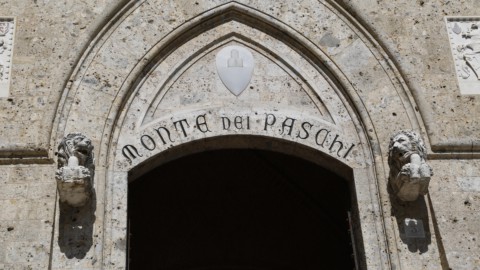The Ugo La Malfa Foundation yesterday presented to the Senate an unpublished report by the Mediobanca Research Area on the Italian banking system focused on the emergency of problem loans and non-performing loans which weigh down credit institutions. At the opening of the proceedings, Paolo Savona and Giorgio La Malfa of the Foundation stated that over the last few months the difficulties and problems of a certain number of medium and large banks have emerged which have raised the question of what are the general conditions of the Italian banking system.
Are troubled banks an exception or are they the tip of the iceberg of a much more serious problem? This is the theme on which the Ugo La Malfa Foundation has focused its attention for some time in relation to the more general theme of the Italian economic recovery.
The situation of the banks is an element that profoundly conditions the possibility of a recovery of the Italian economic activity. The particularly favorable conditions of interest rates guaranteed in recent years by the European Central Bank are a necessary condition for recovery. But they would not be sufficient if the Italian banking system inherited a condition of serious difficulty from the past. For this reason, the research prepared by the Mediobanca Study Office on the Italian banking system and its components is very interesting.
Today's issue, specified Savona and La Malfa, concerns an aspect on which the attention of the market and of the Italian and European authorities has focused: the state of non-performing loans in relation to capital requirements. The problem of non-performing loans cannot be treated with mechanical formulas that do not take into account the general difficulties facing the country. The president of the Senate Industry Commission, Massimo Mucchetti, also spoke on these aspects, indicating as meritorious the way in which Unicredit, on the occasion of the recent capital increase, thought of disposing of its problem loans.
At the center of the La Malfa Foundation conference was the report drawn up by the Mediobanca Studies Area and presented by its director, Gabriele Barbaresco, which collected a set of balance sheet data at the end of 2015 relating to over 490 Italian banks representing 96% of the system. In particular, data was collected for each institution relating to the amount of non-performing loans, their types and the guarantees that support them. The analytical database will be made available free of charge in the next few days on the website www.mbres.it.
These are the main findings of the report relating to the entire Italian banking system:
– In 2015, Popolari and Bcc report the greatest incidence of operating costs on revenues: cost income ratio at 79% for the Bccs, at 78% for Popolari, for SpA at 68%. In the CCBs 65% of revenues come from the interest margin, 34% from commissions, in the joint stock companies 42% comes from the margin, 44% from commissions. The write-down of credits has a greater impact on the revenues of the CCBs (48%) and Popolari (44%) than on those of the SpA (24%). The current result is therefore negative for Bcc (-27% of revenues) and Popolari (-23%), positive for SpA (+8%). Furthermore: the 'liquid stock' (eg Government bonds) represents 35% of the assets in the CCBs and 23% in the Popolari, 15% in the SpA
– One euro out of five lent by Italian banks has deteriorated; of them 58% are in the worst situation (suffering). Popolari and Bcc do not show a better ability to select credit (still €1 : 5), but for them the share of non-performing loans is lower: 52% and 53% against 62% for SpA
– The coverage ratios of non-performing loans are different: 36% for investment banks, 38% for Popolari, up to 48% for SpA. It depends on the different incidence of non-performing loans, but also by observing only non-performing loans the coverage is scattered: from 51% of investment banks, to 52% of Popolari, up to 61% of SpA; for past due/overdue loans, the range ranges from 8% of the CCBs to 21% of the SpAs
– A portion of net non-performing loans is secured: this is 82% of their book value, 75% is fully guaranteed (100% of the book value), 7% is partially guaranteed covering 78 % of book value. 18% of net non-performing loans not covered by any guarantee. This is 34 billion euros, equal to 17% of Core Tier 1 and 16% of tangible equity (22% and 20% of Popular pearls)
– Total guarantees are made up of real assets for 83% (81% only real estate), 16% are personal guarantees; partial guarantees are made up of real assets for 47%, personal assets for 43% (the rest are securities)
– The book value of non-performing loans is 42%, in line with the average realizable value (43% between 2006 and 2015). The in-house management by the bank involves a 47% realization, the one with the transfer to third parties of 23%. Much depends on the guarantees, the borrower (households vs businesses), the capacity of the individual banks (+/- 15 points around the average)
– The sale price to third parties can be raised by reducing the expected rate of return (15% - 25%), also through better documentation of non-performing loans and their guarantees. A block transfer of 176 billion. of non-performing loans at half their book value would reduce tangible equity by approximately 40% (by 17% considering bad loans only).




